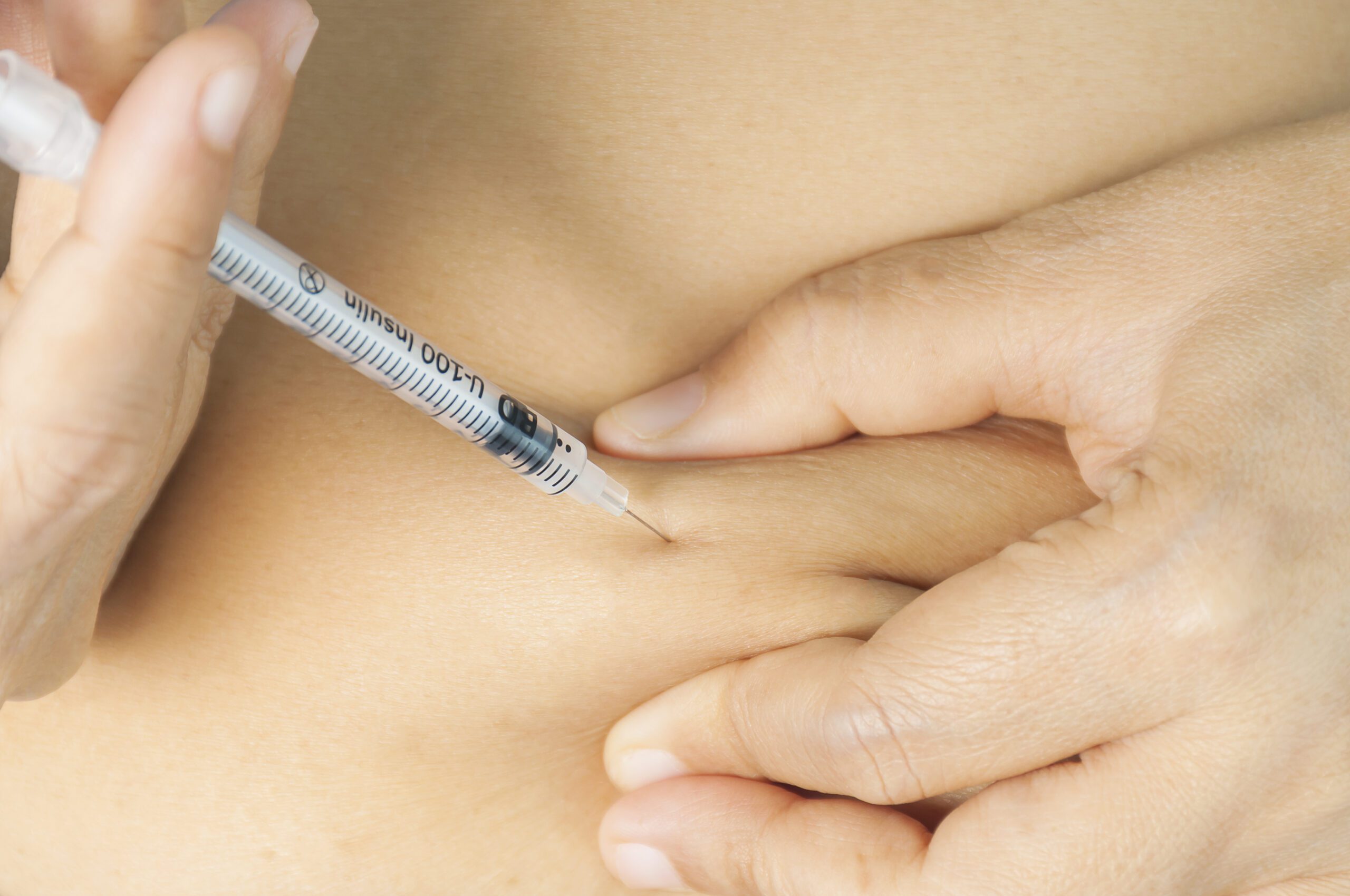Hey there, WellFluencers! 
What Exactly Is Insulin Resistance?
First things first—let’s demystify insulin resistance. Insulin is a hormone produced by your pancreas that helps shuttle glucose (sugar) from your bloodstream into your cells for energy. Think of insulin as the key that unlocks your cells’ doors. In insulin resistance, those doors get a bit rusty—the keys (insulin) don’t work as well, and glucose can’t enter the cells efficiently. This causes your pancreas to produce more insulin, leading to higher insulin levels in your blood.
Over time, this can lead to prediabetes, type 2 diabetes, and a host of other health issues. But fear not! An effective insulin resistance diet plan can help improve your insulin sensitivity and get those cellular doors swinging open again.
Source: Wilcox, G. (2005). Insulin and insulin resistance. Clinical Biochemist Reviews, 26(2), 19–39.
Why Diet Matters in Insulin Resistance
You might be thinking, “Can’t I just pop a pill and call it a day?” Well, medication can help, but diet plays a colossal role in managing insulin resistance. The food you eat can either make your cells more receptive to insulin or exacerbate the resistance. So, let’s focus on feeding your body the right stuff to turn things around.
The Insulin Resistance Diet Plan: Foods That Love You Back
Ready to embark on your insulin resistance diet plan? Here’s what you need to know.
1. Embrace Low-Glycemic Index (GI) Carbohydrates
The glycemic index measures how quickly a food raises your blood sugar levels. Foods with a low GI are like the tortoise—they release glucose slowly and steadily. High GI foods are the hare, causing rapid spikes.
Why It’s Important: Slow and steady glucose release prevents insulin spikes, reducing the burden on your pancreas.
Foods to Include:
- Whole grains like quinoa, barley, and oats
- Legumes such as lentils, chickpeas, and black beans
- Non-starchy vegetables like broccoli, spinach, and peppers
Source: Ludwig, D. S. (2002). The glycemic index: physiological mechanisms relating to obesity, diabetes, and cardiovascular disease. JAMA, 287(18), 2414-2423.
2. Load Up on Fiber
Fiber is the unsung hero of the insulin resistance diet plan. It slows down digestion and the absorption of sugar.
Why It’s Important: High-fiber foods help stabilize blood sugar levels and improve insulin sensitivity.
Foods to Include:
- Fruits like apples, berries, and pears (eat the skin!)
- Vegetables such as artichokes, Brussels sprouts, and carrots
- Whole grains and legumes (double whammy!)
Source: Weickert, M. O., & Pfeiffer, A. F. (2008). Metabolic effects of dietary fiber consumption and prevention of diabetes. The Journal of Nutrition, 138(3), 439-442.
3. Prioritize Lean Proteins
Protein doesn’t spike blood sugar levels and keeps you feeling full.
Why It’s Important: Including protein in your meals can reduce post-meal blood sugar spikes.
Foods to Include:
- Poultry like chicken and turkey
- Fish such as salmon, mackerel, and tuna
- Plant-based proteins like tofu, tempeh, and legumes
Source: Gannon, M. C., & Nuttall, F. Q. (2004). Effect of a high-protein, low-carbohydrate diet on blood glucose control in people with type 2 diabetes. Diabetes, 53(9), 2375-2382.
4. Choose Healthy Fats
Not all fats are created equal. Healthy fats can improve insulin sensitivity.
Why It’s Important: Monounsaturated and polyunsaturated fats help reduce inflammation and improve cell membrane function.
Foods to Include:
- Avocados
(guacamole, anyone?)
- Nuts and seeds like almonds, walnuts, and flaxseeds
- Olive oil and fatty fish
Source: Schwingshackl, L., & Hoffmann, G. (2014). Monounsaturated fatty acids, olive oil and health status: a systematic review and meta-analysis of cohort studies. Lipids in Health and Disease, 13(1), 154.
5. Limit Added Sugars and Refined Carbs
Sorry, but those donuts aren’t doing you any favors.
Why It’s Important: Added sugars and refined carbs cause rapid spikes in blood sugar and insulin levels.
Foods to Avoid:
- Sugary drinks like soda and sweetened teas
- White bread, pasta, and pastries
- Candy and sugary snacks
Source: Te Morenga, L., Mallard, S., & Mann, J. (2013). Dietary sugars and body weight: systematic review and meta-analyses of randomized controlled trials and cohort studies. BMJ, 346, e7492.
6. Regular Meal Patterns
Skipping meals can backfire.
Why It’s Important: Regular eating patterns help maintain steady blood sugar and insulin levels.
Tips:
- Don’t skip breakfast—it’s the most important meal, after all!
- Aim for balanced meals with carbs, protein, and fats
- Consider smaller, more frequent meals if it suits you
Source: Farshchi, H. R., Taylor, M. A., & Macdonald, I. A. (2004). Regular meal frequency creates more appropriate insulin sensitivity and lipid profiles compared with irregular meal frequency in healthy lean women. European Journal of Clinical Nutrition, 58(7), 1071-1077.
Sample Day on the Insulin Resistance Diet Plan
Let’s put it all together. Here’s what a day might look like on the insulin resistance diet plan.
Breakfast
- Spinach and Mushroom Omelette: Made with egg whites and one whole egg
- Whole Grain Toast: One slice of whole-grain bread
- Berries: A handful of blueberries or raspberries
Snack
- Apple Slices with Almond Butter: Keep the skin on for extra fiber
Lunch
- Grilled Chicken Salad: Loaded with leafy greens, tomatoes, cucumbers, and a sprinkle of quinoa
- Olive Oil and Lemon Dressing
Snack
- Greek Yogurt (unsweetened) with flaxseeds
Dinner
- Baked Salmon: Seasoned with herbs and lemon
- Roasted Vegetables: Broccoli, Brussels sprouts, and carrots drizzled with olive oil
- Brown Rice: A small serving for those complex carbs
Evening Snack (if needed)
- Chia Seed Pudding: Made with unsweetened almond milk and a dash of vanilla
Lifestyle Factors: Beyond the Plate
An insulin resistance diet plan is crucial, but let’s not ignore the other pieces of the puzzle.
Get Moving
Exercise increases insulin sensitivity. Even a 30-minute walk can make a difference.
Catch Those Zzz’s
Lack of sleep can worsen insulin resistance.
Stress Less
Chronic stress affects hormones that can exacerbate insulin resistance.
Tips to Stay on Track with Your Insulin Resistance Diet Plan
- Meal Prep Like a Boss: Having healthy options ready reduces the temptation to stray.
- Hydrate: Sometimes we think we’re hungry when we’re just thirsty.
- Read Labels: Sugar hides in sneaky places. Be the Sherlock Holmes of the grocery aisle.
- Treat Yourself (Wisely): Cravings happen. Opt for a piece of dark chocolate or a small serving of fruit.
Final Thoughts
Managing insulin resistance might seem like climbing Mount Everest 
Now, over to you!
What’s your biggest challenge when it comes to sticking to an insulin resistance diet plan? Share your thoughts and tips in the comments below!
Sources
- Wilcox, G. (2005). Insulin and insulin resistance. Clinical Biochemist Reviews, 26(2), 19–39.
- Ludwig, D. S. (2002). The glycemic index: physiological mechanisms relating to obesity, diabetes, and cardiovascular disease. JAMA, 287(18), 2414-2423.
- Weickert, M. O., & Pfeiffer, A. F. (2008). Metabolic effects of dietary fiber consumption and prevention of diabetes. The Journal of Nutrition, 138(3), 439-442.
- Gannon, M. C., & Nuttall, F. Q. (2004). Effect of a high-protein, low-carbohydrate diet on blood glucose control in people with type 2 diabetes. Diabetes, 53(9), 2375-2382.
- Schwingshackl, L., & Hoffmann, G. (2014). Monounsaturated fatty acids, olive oil and health status: a systematic review and meta-analysis of cohort studies. Lipids in Health and Disease, 13(1), 154.
- Te Morenga, L., Mallard, S., & Mann, J. (2013). Dietary sugars and body weight: systematic review and meta-analyses of randomized controlled trials and cohort studies. BMJ, 346, e7492.
- Farshchi, H. R., Taylor, M. A., & Macdonald, I. A. (2004). Regular meal frequency creates more appropriate insulin sensitivity and lipid profiles compared with irregular meal frequency in healthy lean women. European Journal of Clinical Nutrition, 58(7), 1071-1077.
- Colberg, S. R., et al. (2010). Exercise and type 2 diabetes. Diabetes Care, 33(12), e147-e167.
- Spiegel, K., Leproult, R., & Van Cauter, E. (1999). Impact of sleep debt on metabolic and endocrine function. The Lancet, 354(9188), 1435-1439.
- Black, P. H. (2006). The inflammatory consequences of psychologic stress: relationship to insulin resistance, obesity, atherosclerosis and diabetes mellitus, type II. Medical Hypotheses, 67(4), 879-891.
Remember, always consult with a healthcare professional before making significant changes to your diet or lifestyle.


